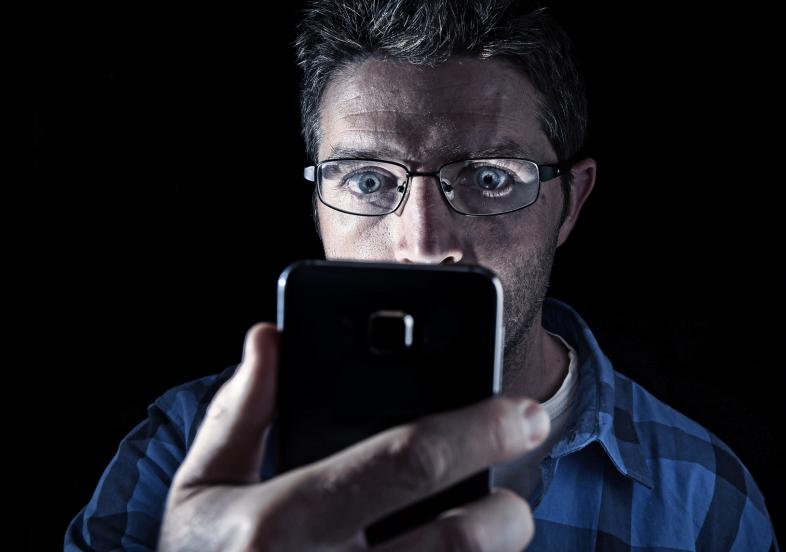The human eyes are sensitive to a narrow band of light wavelengths that range from blue (short wavelength and high energy) to red (long wavelength and lower energy). Blue light makes up approximately one third of the visible spectrum. The sun is our main and natural source of blue light. However, with advances in technology, we are also being exposed to other sources of blue light such as computer monitors, smartphone screens, flat screen televisions and LED lights.
While these sources generate blue light at much lower intensity than the sun, we are exposing ourselves to them for longer periods of time and at much closer distances. This can cause eye strain because blue light scatters more in the eye and is not focused as easily as lower energy wavelength light. This scatter creates “visual noise” that reduces contrast and can contribute to digital eye strain.
Natural blue light from the sun is important for maintaining the circadian rhythm (our natural sleep/wake cycle). It also helps to boost mood, memory and cognitive function. Exposure to too much artificial blue light, especially at night, from electronic devices may lead to poor sleep quality, difficulty falling asleep, and daytime fatigue because it has been shown to suppress melatonin production, sleepiness and morning alertness This is especially problematic for adolescents, who prefer sleep/wake cycles that are considerably delayed compared to younger children or adults.
Extended exposure to blue light over a lifetime, particularly from the sun, is likely to cause harm to the eye[i]. It leads to conditions such as cataracts (clouding of the lens of the eye resulting in decreased vision) and signs resembling macular degeneration (a deterioration of the central part of the retina, which is essential for reading, driving and recognizing colours and faces). Studies have shown that it is the cumulative exposure to blue and ultraviolet light that causes these effects. Children are more vulnerable to the effects of ultraviolet and blue light because their eye lenses are less able to filter out high energy blue light[ii].
Staying Healthy
Evidence suggests that exposure to blue light in the 470-490nm wavelength range (lower energy) is less damaging to the eye than blue light in the 400-470nm wavelength range (higher energy) and essential for maintaining a healthy circadian rhythm. Development of LEDs with a peak emission in the safer range may represent an important advancement for ocular health.
While there is no clinical evidence of a damaging effect of exposure to artificial high energy blue light, children’s exposure to artificial light from electronic devices should be monitored and controlled. Over time, there might be accumulated damage to the eye from blue light exposure.
A healthy diet, rich in leafy green vegetables and colourful fruits, is important for general good health as well as for vision health. A healthy diet provides the vitamins and minerals that are essential for vision health and contribute to the eyes’ own natural defenses against the effects of blue light.
Good sleep is also essential for attention, learning, mood, and general well-being. The effects of blue light on the sleep cycle may be minimized by avoiding bright screens for two to three hours before bedtime and seeking outdoor light exposure earlier in the day.
Do I need blue-blocking lenses?
Research has demonstrated that extended exposure to sunlight is damaging to the eye. Therefore, it is good practice to protect the eyes from the sun, including wearing UV-blocking sunglasses. There is no clinical evidence that artificial blue light at low intensity and shorter exposure periods is harmful to the eye. Research suggesting a damaging effect of blue light on eye cells has only been conducted in vitro (in the lab) rather than on the living human eye.
There are filters and apps that reduce blue light from screens without affecting visibility and special glare-reducing lens coatings that block high-energy visible blue light. Whether or not to add blue-blocking coating on your prescription lenses is an individual decision that should be made with an optometrist, who as a primary eye care provider, is your best resource for making an informed decision. Together you can discuss your individual risk factors such as age, risk and length of exposure, history of or current eye conditions, and general eye health. Make an appointment today to discuss your screen use with Dr. Ho, Gilliver or Tsoi


Leave a Comment